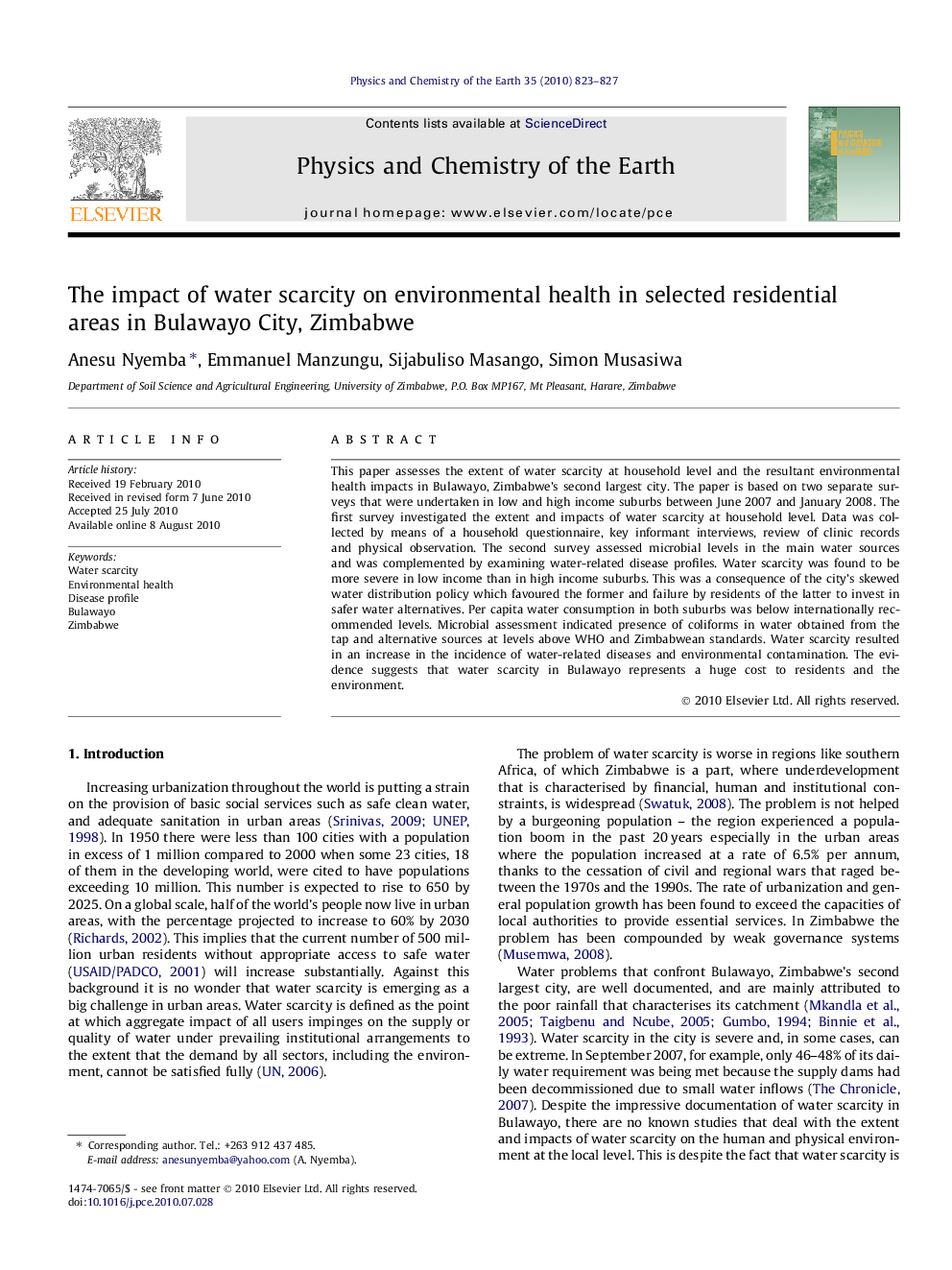| Article ID | Journal | Published Year | Pages | File Type |
|---|---|---|---|---|
| 4721789 | Physics and Chemistry of the Earth, Parts A/B/C | 2010 | 5 Pages |
This paper assesses the extent of water scarcity at household level and the resultant environmental health impacts in Bulawayo, Zimbabwe’s second largest city. The paper is based on two separate surveys that were undertaken in low and high income suburbs between June 2007 and January 2008. The first survey investigated the extent and impacts of water scarcity at household level. Data was collected by means of a household questionnaire, key informant interviews, review of clinic records and physical observation. The second survey assessed microbial levels in the main water sources and was complemented by examining water-related disease profiles. Water scarcity was found to be more severe in low income than in high income suburbs. This was a consequence of the city’s skewed water distribution policy which favoured the former and failure by residents of the latter to invest in safer water alternatives. Per capita water consumption in both suburbs was below internationally recommended levels. Microbial assessment indicated presence of coliforms in water obtained from the tap and alternative sources at levels above WHO and Zimbabwean standards. Water scarcity resulted in an increase in the incidence of water-related diseases and environmental contamination. The evidence suggests that water scarcity in Bulawayo represents a huge cost to residents and the environment.
